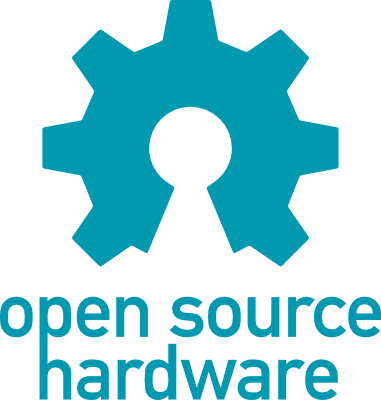Last year's election for board members at Open Source Initiative was "hacked," which necessitated a re-vote. Fortunately, this year's election was a smooth experience.
Posts published in “Copyright”
An act of Congress that was supposed to level the playing field for performers and songwriters seems to do little to upset the status quo. As The Who once said, "Meet the new boss, same as the old boss."
It appears that the once cancelled SCO Show has again been rebooted after a federal judge okays an appeal.

SCO. There’s a name I’ll bet you thought you’d never hear again. Guess what? It’s back.
Wasn’t there a Bond film called “Live to Die Another Day.” Even if there wasn’t, that applies here.
Christine Hall has been a journalist since 1971. In 2001, she began writing a weekly consumer computer column and started covering Linux and FOSS in 2002 after making the switch to GNU/Linux. Follow her on Twitter: @BrideOfLinux
Actually, the incident reads more like vandalism than ransomware, but it still illustrates that the DMCA is bad law.

I’ll betcha never figured that one of the things you could do with a DMCA take down notice was use it as ransomware. In a case that proves that if you write bad law it’ll be exploited in more ways than you can imagine, that’s now been done. Forget the record and movie industries moves to take down innocent YouTube posts by misidentifying content as infringing — or misunderstanding fair use.
Christine Hall has been a journalist since 1971. In 2001, she began writing a weekly consumer computer column and started covering Linux and FOSS in 2002 after making the switch to GNU/Linux. Follow her on Twitter: @BrideOfLinux
It seems to us that enterprises have adopted “permissive” licenses because they see them as a way to “have their cake and eat it too.”

Roblimo’s Hideaway
The GPL has many good points, as well as restrictions that make it unappealing to many commercial software producers and users. Plus, over the years, it has accumulated tons of political baggage only marginally related to its utility as a software license. So should we consider the Fair License as a possible replacement? And, whether we like it or not, are permissive licenses — like the Fair License, BSD License, and MIT License taking over anyway?
Robin “Roblimo” Miller is a freelance writer and former editor-in-chief at Open Source Technology Group, the company that owned SourceForge, freshmeat, Linux.com, NewsForge, ThinkGeek and Slashdot, and until recently served as a video editor at Slashdot. Now he’s mostly retired, but still works part-time as an editorial consultant for Grid Dynamics, and (obviously) writes for FOSS Force.
Should the U.S. armed forces begin releasing software under an OSI approved open source license rather than as public domain?
Roblimo’s Hideaway

This question has generated many pixels’ worth of traffic on the OSI License discuss email list. This post is just a brief summary of a little of the discussion, which has been going on for some weeks and shows no sign of slowing down.
There are currently 80 Open Sourse Initiative-approved open source licenses. It’s nice that the Army (I’m a veteran) wants to not only write software licensed as open source, but OSI-approved open source software. (Go Army!)
But does the Army really need its own special OS license? Should the Air Force have a different one? Will the Navy want a Coastal Combat Open Source License, along with a separate Blue Water Open Source License? That might sound far-fetched, but Mozilla has three separate open source licenses, Microsoft has two, and Canada’s province of Québec also has three. So why shouldn’t the U.S. Department of Defense have a whole slew of open source licenses?
Robin “Roblimo” Miller is a freelance writer and former editor-in-chief at Open Source Technology Group, the company that owned SourceForge, freshmeat, Linux.com, NewsForge, ThinkGeek and Slashdot, and until recently served as a video editor at Slashdot. Now he’s mostly retired, but still works part-time as an editorial consultant for Grid Dynamics, and (obviously) writes for FOSS Force.
Is it “organic,” or just merely “natural?” Is it really “open source hardware,” or merely hardware with a degree of openess? David Jones explains the problem in identifying which is which and who is whom.
The Video Screening Room
David L. Jones, an electronics design engineer based in Sydney Australia, explains his pragmatic solution to the use of the open source hardware logo — inspired by the varying gradations of the Creative Commons licenses.
For the past 10 years, Phil has been working at a public library in the Washington D.C.-area, helping youth and adults use the 28 public Linux stations the library offers seven days a week. He also writes for MAKE magazine, Opensource.com and TechSoup Libraries. Suggest videos by contacting Phil on Twitter or at pshapiro@his.com.
Also included: Japanese company reportedly buying ARM, Flash is on it’s way out the door and Toyota joins the Open Invention Network FOSS Week in…
It’s easy to be tempted to draw a parallel between the recent fork of ownCloud by Nextcloud and The Document Foundation’s fork of OpenOffice six years ago. Slight differences are there, but they’re probably meaningless.
There are more than enough similarities between the recent forking of ownCloud to Nextcloud and the creation of LibreOffice out of OpenOffice six years ago to draw comparisons, but there are also many differences. As Yogi Berra might say, they are the same but different.
 OpenOffice, if you’ll remember, was forked by a group of developers who had been frustrated for years by roadblocks to what they saw as necessary development by Sun Microsystems, which had created the open source project out of Star Office, a proprietary suite it purchased in the late 1990s. When the situation worsened after Oracle took ownership, the developers created The Document Foundation, forked OpenOffice and released it as LibreOffice under the GPL. Improvements became evident right away, with much of the early work centering on cleaning up the bloated code base.
OpenOffice, if you’ll remember, was forked by a group of developers who had been frustrated for years by roadblocks to what they saw as necessary development by Sun Microsystems, which had created the open source project out of Star Office, a proprietary suite it purchased in the late 1990s. When the situation worsened after Oracle took ownership, the developers created The Document Foundation, forked OpenOffice and released it as LibreOffice under the GPL. Improvements became evident right away, with much of the early work centering on cleaning up the bloated code base.
Christine Hall has been a journalist since 1971. In 2001, she began writing a weekly consumer computer column and started covering Linux and FOSS in 2002 after making the switch to GNU/Linux. Follow her on Twitter: @BrideOfLinux









